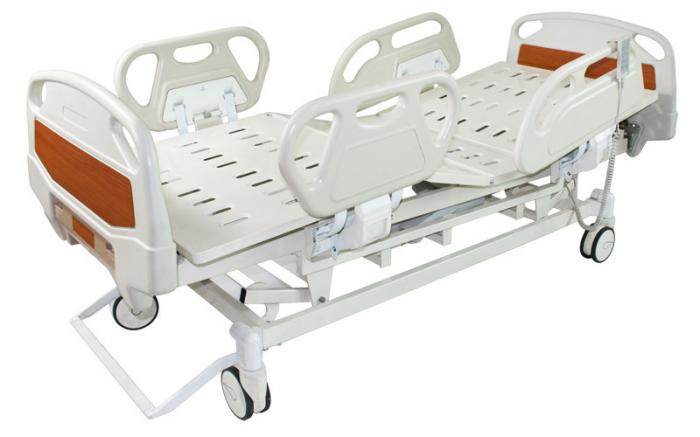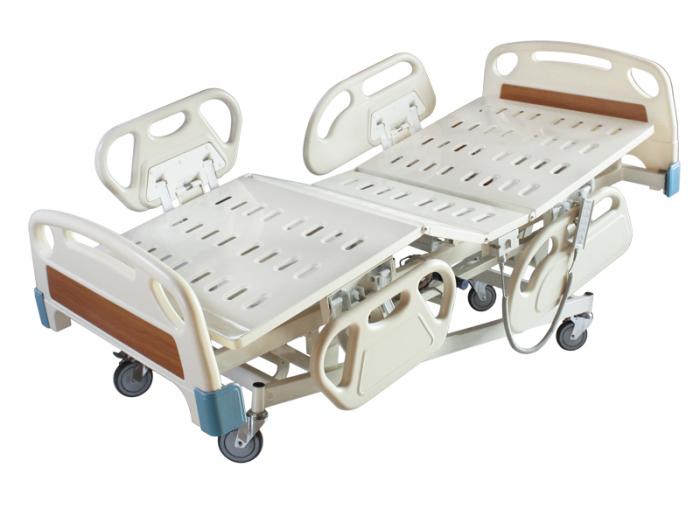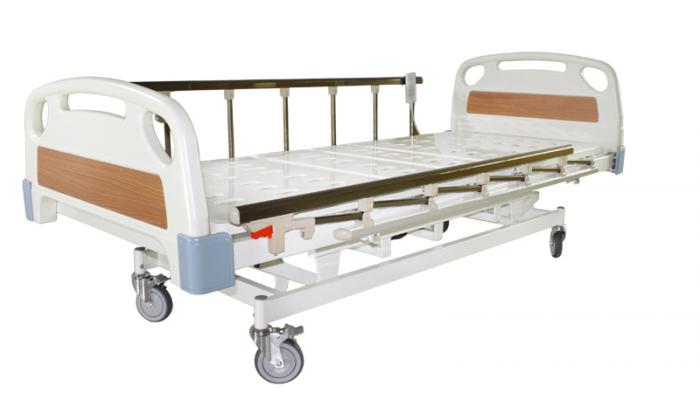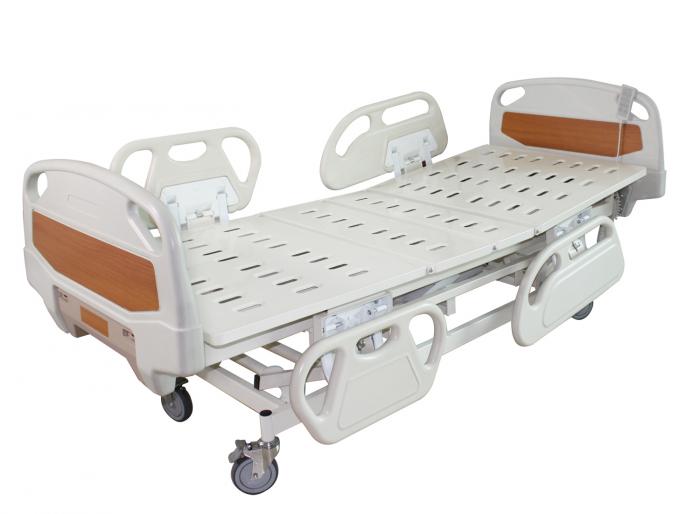| Name: | Nursing Home Bed |
|---|---|
| Model No.: | BES-HB017 |
| Product Name: | Nursing Home Beds |
| Brand: | BESCO |
| MOQ: | 20 units |
| Keywords: | Nursing Home Beds,Long Term Care Beds,Hospital Beds for Home,Fully Electric & Adjustable Hospital Beds |
| Sample: | Available |
| Lead time: | 25 days |
| Payment Term: | T/T in advance |
| Country of Original: | China |
| Weight Capacity: | 220 kgs |
| Stock: | NO |
| Factory Address: | Jiangmen |
| Office: | Zhengzhou,China |
Products Description
Nursing Home Bed with Three Function
Function:
Back-rest tilting is 0~60º.
Knee-rest tilting is 0~40º.
Height adjustment is 280~680mm.
European side rails or aluminum alloy side rails can be selected,bed foot part can be extended 200mm extra.
Standard accessory:
4" castors,three motors system,inserted wooden bed board
Optional:
Two sectional IV pole,mattress,lifting pole
| Dimension | L2130~2330*W990*H280~680mm |
| Material | Steel framework |
| Backrest adjustment anle | 0-60º |
| Leg rest adjustment angle | 0-40º |
| Height adjustment range | 280~680mm |

A nursing home bed, also known as a long-term care bed or care bed, is a specialized, adjustable bed designed for people with limited mobility or ongoing medical conditions who require extended stays in nursing homes, rehabilitation centers, or at home. These beds prioritize patient comfort and safety with features like height adjustments, adjustable head and foot sections, and side rails to prevent falls and assist with movement. They are built for long-term use, offering a higher degree of comfort and features that support patients and caregivers for weeks, months, or even years.
Key Features and Benefits:
Adjustability:
Nursing home beds allow caregivers to adjust the bed's height, and the backrest and leg sections, to position patients for comfort, medical procedures, or to ease entry and exit.
Safety Features:
Many nursing home beds include side rails or other safety features to prevent falls, a significant concern for bedridden patients.
Patient Comfort:
The adjustable positions and comfortable mattresses are designed to prevent pressure ulcers, improve circulation, and enhance the overall quality of life for residents.
Caregiver Ergonomics:
The ability to adjust bed height and position helps caregivers provide care more efficiently and reduces strain during tasks like bathing, feeding, and repositioning.
Durability:
Built for long-term use, these beds are more robust than typical hospital beds, which are usually for short-term stays.
Added Accessories:
Optional accessories like over-bed tables, special mattresses, and wall bumpers can be added to further enhance patient comfort and safety.
Why They Are Different from Hospital Beds
Purpose:
Hospital beds are designed for short-term use during acute medical episodes, while nursing home beds are built for long-term care and extended stays.
Features:
While similar in their adjustability, nursing home beds often feature specialized low-height positions for safety and enhanced comfort features to support extended use.
Durability:
Nursing home beds are constructed to withstand the rigors of constant, long-term use, which is less critical for short-stay hospital beds
To use a nursing home bed, operate its electric or manual controls to adjust the height and head/foot positions for comfort and safety. Keep the bed wheels locked and the bed in the lowest possible position unless adjustment is needed, using side rails to prevent falls. Always keep the bed and its controls within easy reach.
Operating the Bed
Height adjustment:
Raise the bed to your waist level or align it with a wheelchair to facilitate getting in and out.
Head/Foot section adjustment:
Raise the head of the bed to help you sit up or the foot to adjust positioning.
Locating controls:
Use the remote control or buttons on the bed to adjust functions.
Safety Precautions
Lock wheels:
Always keep the bed's wheels locked to prevent it from moving unexpectedly.
Side rails:
Raise and lock the side rails to help prevent falls, especially when you are at risk.
Positioning:
Keep the bed in its lowest position for maximum safety.
Reach:
Place a bell and telephone within easy reach.
Monitor:
If you are a high-risk patient, monitor yourself frequently and ask for assistance.
General Best Practices
Adjust for needs:
Use the adjustable features to accommodate both patient and healthcare worker needs, such as for bathing or dressing.
Anticipate needs:
Anticipate reasons you might need to get out of bed, such as thirst or the need to use the bathroom, and ask for assistance as needed.
Familiarize yourself:
Take time to adjust the bed and learn how all the controls work before relying on them.
Regular monitoring:
Nursing home staff will perform ongoing evaluations of patients to optimize bed safety.
Prevent entrapment:
Use a proper-sized mattress or a mattress with raised foam edges to prevent entrapment between the mattress and side rails.





